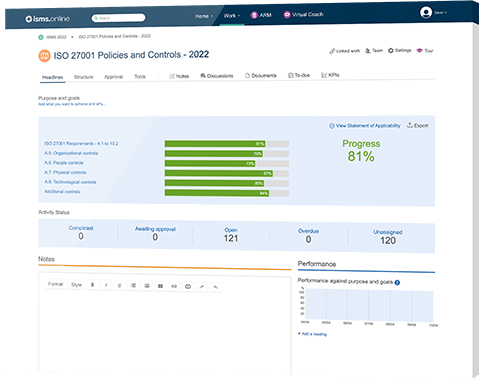
As well as managing the ongoing use of data and information on internal servers and storage devices (HDDs, arrays, USB drives etc.), organisation’s need to be acutely aware of their obligations towards removing and deleting any data held on employees, users, customers or organisations when it is reasonably necessary to do so (usually when it is no longer needed).
Control 8.10 is a preventative control that modifies risk by outlining an approach to data deletion that complements an organisation’s existing data retention policies, and keeps them compliant with any prevailing laws or regulatory guidelines.
| Control Type | Information Security Properties | Cybersecurity Concepts | Operational Capabilities | Security Domains |
|---|---|---|---|---|
| #Preventive | #Confidentiality | #Protect | #Information Protection #Legal and Compliance | #Protection |
Control 8.10 largely deals with maintenance tasks relating to the deletion and destruction of data and/or IT assets, including the use of specialised software and liaising with vendors who specialise in data and device deletion. As such, ownership should reside with the Head of IT, or organisational equivalent.
It can sometimes be difficult to ascertain when data should be deleted. As a general rule, Control 8.10 asks organisations to delete data when it is no longer required, in order to minimise what is referred to as undesirable disclosure – i.e. data being viewed by, or passed on to, individuals and organisations that are not authorised to access it.
In accordance with this guideline, when the time comes to delete data, organisations should:
When formulating a deletion process, organisations should:
When shipping equipment (notably servers and workstations) to vendors, organisations should remove any internal or external storage devices before doing so.
None. Control 8.10 has no precedent in ISO 27002:2013 as it is new.
The ISMS.online platform provides a range of powerful tools that simplify the way you can document, implement, maintain and improve your information security management system (ISMS) and achieve compliance with ISO 27002.
The comprehensive package of tools gives you one central place where you can create a bespoke set of policies and procedures that align with your organisation’s specific risks and needs. It also allows for collaboration between colleagues as well as external partners such as suppliers or third party auditors.
Get in touch today to book a demo.

We’ll give you an 81% headstart
from the moment you log in
Book your demo
| ISO/IEC 27002:2022 Control Identifier | ISO/IEC 27002:2013 Control Identifier | Control Name |
|---|---|---|
| 5.7 | New | Threat intelligence |
| 5.23 | New | Information security for use of cloud services |
| 5.30 | New | ICT readiness for business continuity |
| 7.4 | New | Physical security monitoring |
| 8.9 | New | Configuration management |
| 8.10 | New | Information deletion |
| 8.11 | New | Data masking |
| 8.12 | New | Data leakage prevention |
| 8.16 | New | Monitoring activities |
| 8.23 | New | Web filtering |
| 8.28 | New | Secure coding |
| ISO/IEC 27002:2022 Control Identifier | ISO/IEC 27002:2013 Control Identifier | Control Name |
|---|---|---|
| 6.1 | 07.1.1 | Screening |
| 6.2 | 07.1.2 | Terms and conditions of employment |
| 6.3 | 07.2.2 | Information security awareness, education and training |
| 6.4 | 07.2.3 | Disciplinary process |
| 6.5 | 07.3.1 | Responsibilities after termination or change of employment |
| 6.6 | 13.2.4 | Confidentiality or non-disclosure agreements |
| 6.7 | 06.2.2 | Remote working |
| 6.8 | 16.1.2, 16.1.3 | Information security event reporting |
| ISO/IEC 27002:2022 Control Identifier | ISO/IEC 27002:2013 Control Identifier | Control Name |
|---|---|---|
| 7.1 | 11.1.1 | Physical security perimeters |
| 7.2 | 11.1.2, 11.1.6 | Physical entry |
| 7.3 | 11.1.3 | Securing offices, rooms and facilities |
| 7.4 | New | Physical security monitoring |
| 7.5 | 11.1.4 | Protecting against physical and environmental threats |
| 7.6 | 11.1.5 | Working in secure areas |
| 7.7 | 11.2.9 | Clear desk and clear screen |
| 7.8 | 11.2.1 | Equipment siting and protection |
| 7.9 | 11.2.6 | Security of assets off-premises |
| 7.10 | 08.3.1, 08.3.2, 08.3.3, 11.2.5 | Storage media |
| 7.11 | 11.2.2 | Supporting utilities |
| 7.12 | 11.2.3 | Cabling security |
| 7.13 | 11.2.4 | Equipment maintenance |
| 7.14 | 11.2.7 | Secure disposal or re-use of equipment |